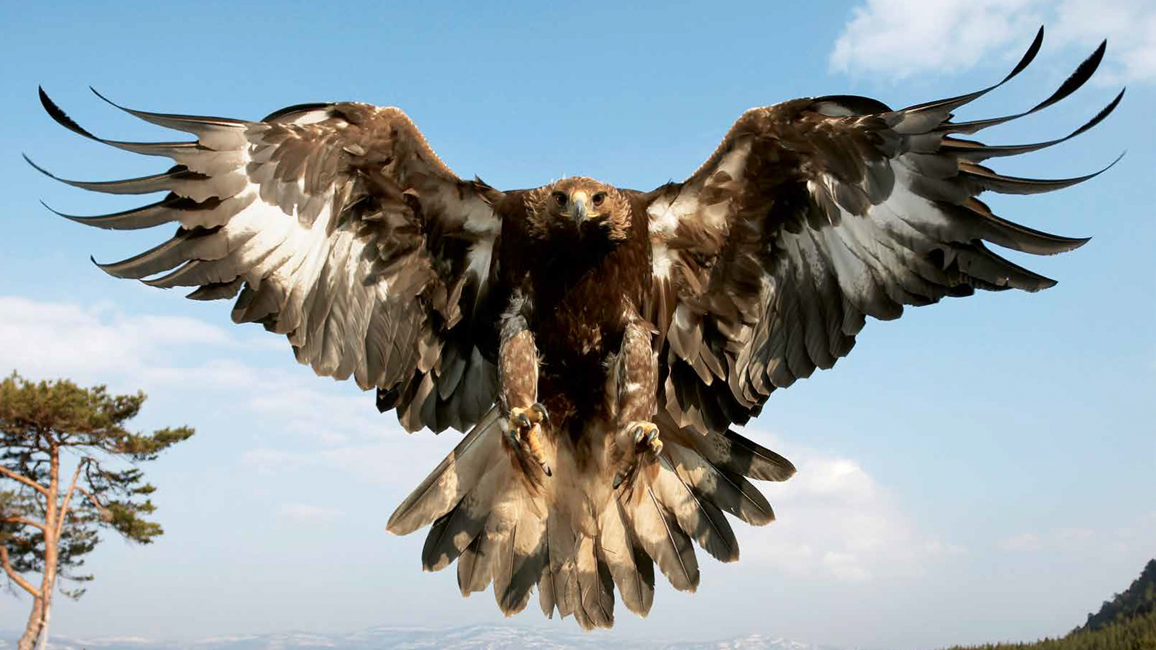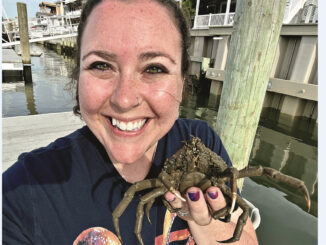
Fantastic Feathers
By Gerry BishopAny story about feathers has to begin a long, long time ago. Fossils show that, as far back as 200 million years ago, something new and strange appeared on Earth. It was a small two-legged dinosaur with hair-like feathers!
Scientists have figured out that some of the earliest feathers were colorful. They think that may have helped the dinosaurs attract mates. The feathers also may have helped the dinosaurs keep warm.
As more time passed, some dinosaurs may have appeared with heavily feathered arms. Their wing-like arms may have helped the “dino-birds” scramble up steep cliffs to escape enemies. Finally, one of these creatures flapped its wings and took flight. The first true bird had arrived!
KEEPING WARM
What’s that puffball (above left) sitting on a tree branch? It’s a blue jay that has fluffed out its feathers to keep warm on a very cold day.
Hidden beneath a bird’s outer feathers are lots of tiny, fuzzy feathers called down. Like a fluffy, puffy coat or comforter, the down traps a thick layer of air. This air helps hold in body heat.
BLENDING IN
Can you see the potoo (POH-too) (above)? In daylight, the feathers of this night-flying bird match the tree bark almost exactly. To complete the disguise, the potoo closes its eyes and stays perfectly still—in a pose that makes it look just like a broken branch. Predators pass by while the potoo snoozes in plain sight.
SHOWING OFF
Some birds need to stay hidden, but others need to show off. The male hummingbird above is putting on a show that can’t be missed. He flares out the shimmery feathers on his throat, which catch the light in just the right way. The feathers flash a fiery-bright signal. To other males the signal says, “Back off, buddy—this place is mine!” And to females it says, “Aren’t I handsome? Want to be my mate?”
I’M MOLTING! I’M MOLTING!
When feathers become worn out and damaged—or are no longer needed—they fall out and get replaced. This is called molting.
For example, the young penguin (top right photo) wore only down feathers for warmth while growing up on land. But soon it will need to dive into the cold ocean to find its own food. So it’s replacing its fuzzy baby feathers with sleek, waterproof adult feathers.
Many other kinds of birds exchange drab feathers for colorful ones as mating season arrives. And some shed brown summer feathers and grow winter-white ones that blend in with snow.
OIL ME UP!
Have you heard the saying, “like water off a duck’s back”? Ducks really are waterproof, as you can see in the photo of the mallard above. And for good reason: To float like a boat, keep your feathers dry!
Ducks and most other water birds stay dry by coating their feathers with a waxy oil. The oil comes from a gland at the base of a bird’s tail. The pelican (above) is dipping its bill in this gland. Then it will spread some of the oil onto its feathers.
Besides shedding water, the oil also helps keep feathers smooth, shiny and less likely to break. That’s why most birds—not just water birds—use this oil to care for their feathers.
DUST IS A MUST
The rooster (above right) is taking a dust bath! It has flopped around in some dry, powdery soil. And now it’s shaking itself off. As the dust flies, it carries away bits of dead skin and any extra oil that may have been stuck to the feathers. The dust may even help keep mites, lice, and other pests away.
For many birds, water is the first choice for bathing. But where water is hard to find, dust often comes to the rescue!
ZIP IT!
You comb your hair to keep it smooth, right? Same thing with birds and their feathers. In the close up drawing above, you can see how the parts of a feather hook together like the teeth of a zipper. If they split apart, a bird just zips them back together by pulling the feather through its bill, as the kestrel above is doing. Then that feather is good to go. Fantastic!
“Fantastic Feathers” originally appeared in the August 2013 issue of Ranger Rick magazine.
(Click on each image above for a closer view of the story.)



















